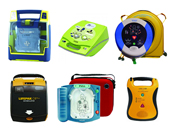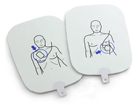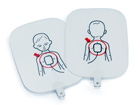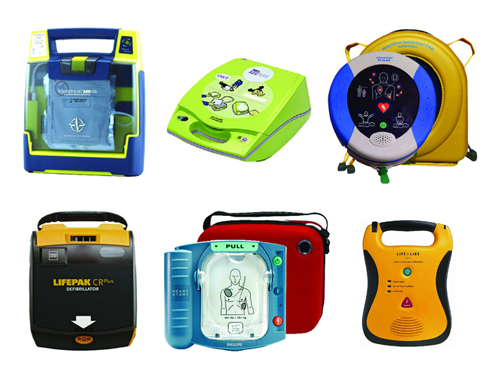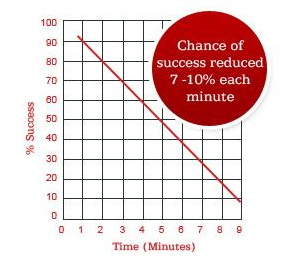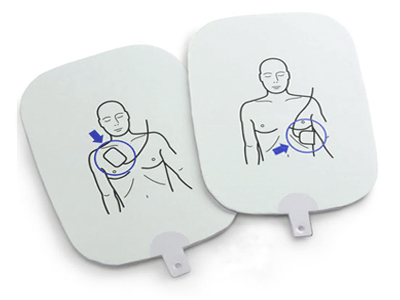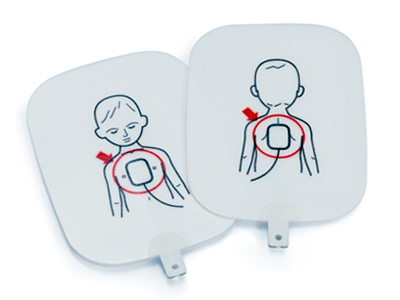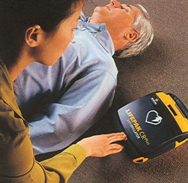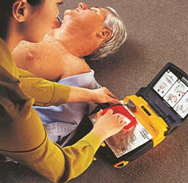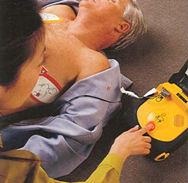DEFINITION
AED (Automatic External Defibrillator) is a small, portable device that uses sophisticated electronics to diagnose and analyze a victim's cardiac arrhythmias of ventricular fibrillation and ventricular tachycardia (i.e. irregular heartbeat), and is able to determine whether defibrillation is required. If necessary the AED can administer defibrillation (electric shock) to the heart, allowing the heart to re-establish a normal rhythm.
Originally intended for use by non-medical personnel such as officers of the peace, fire fighters, flight attendants, and other lay-rescuers with proper training, AED's are becoming increasingly more available in public places such as schools, airports, banks, concert halls, malls, fairgrounds, libraries, health clubs, office building, and even restaurants and cafes. With this wider access to AED's, the devices' design has been simplified to incorporate easily-understood audio and visual commands. And with their growing availability and accessibility, public AED's are typically installed in large common areas and made immediately visible by an accompanying bright sign.
Although research has shown AED's to be approximately 95% accurate - that is the nearly unerring ability to properly assess the need for defibrillation - and most employ multiple safeguards to protect both the victim and the rescuer, fundamental training, including safety and maintenance, is crucial for effective use. Experts agree that the concept of Public Access Defibrillation (also known by the acronym "PAD") may be the biggest advance in the treatment of sudden cardiac arrest (SCA) since the invention of CPR in 1960.
EFFECTIVENESS
For each minute that AED is delayed the victim's chance of survival is reduced by approximately 10% percent. Conversely, early defibrillation increases survival rates to greater than 50%. A study conducted over a 2-year period analyzing the effects of early defibrillation found that of 22 victims of cardiac arrhythmia, 18 were not only treatable by AED, but 11 of these 18, survived. Notably, 6 of the 11 surviving victims were treated with AED by bystanders with no training in AED use.
LIABILITY
The prevalence of AED's and ease of use dictate that in most states in the United States any layperson who administers defibrillation in "good faith" is protected under Good Samaritan laws. This means that the individual using AED while not acting in a "professional" capacity cannot be held civilly liable for the harm or death of a victim by providing improper care, provided that the person was acting within the limits of his training and in good faith.
USING AED
Unlike defibrillators used in emergency rooms, an automated external defibrillator (AED) requires very little training to use. And while functionality and features vary slightly from one model to another, most AED's microprocessors are almost fool-proof as they guide the operator through each step with audible and visual prompts. Before defibrillation is administered the victim's chest must be dry and bare of clothing. If a female victim is wearing a bra with metal underwire, it must also be removed to avoid potential electrical interference.
Retrieve AED and position it near the victim as promptly as possible. When the device is turned on it will instruct the operator to connect the electrodes (pads) to the victim. These pads allow the AED to examine the electrical output from the victim's heart and determine if a shock is required. Follow the AED instructions and voice prompts by placing one pad above the victim's right nipple/upper chest area, and the second pad below the left armpit, on the lower rib area, ensuring full and firm contact with the victim's skin.
AED ON CHILD AND INFANT VICTIMS
Some AED's are designed to be used on children under 55 lbs. or under age 8. If the AED is approved for pediatric application, appropriate pads should be used and placed properly, ensuring that one pad does not make contact with the other. For a very small child or infant, the pads should be placed with one in the center of the chest and the other in the center of the back between the child's or infant's shoulder blades.
It's critical to remember that once the pads are attached, the victim must not be touched by another person as this may cause the AED to produce inaccurate readings - in other words, stand clear of the victim. The AED will analyze the victim's heartbeat and if it determines that a shock is needed, it will charge and announce a distinct loud warning similar to "Preparing for shock... Charging... Clear...". Again, make sure that no one is making any kind of physical contact with the victim to avoid the possibility of accidental injury.

